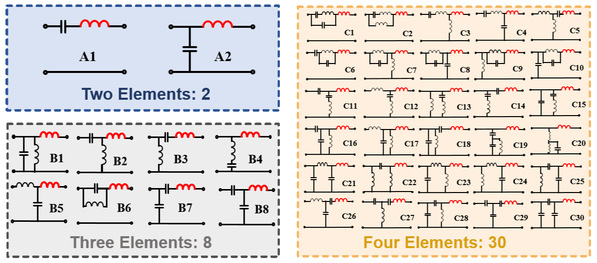Recently, Prof. Fu Minfan’s research group proposes a method to analyze high-order compensation network for inductive power transfer. Compared to the conventional math-based analysis, this method is more systematic, general, and simple. This result is recently published on the IEEE Transaction on Microwave Theory and Techniques, with the title of “Decomposition and Synthesis of High-Order Compensated Inductive Power Transfer Systems for Improved Output Controllability”.

Fig.1 Resonant tank candidates
Inductive Power Transfer (IPT) is widely used in mobile phone, robots, electrical vehicle. An IPT system is essentially a high-frequency high-order resonant circuit with varied coupling. Usually, people have to design the compensation network to meet different requirements, such as output power, efficiency, voltage and current stress, and load independence. However, most of the existing IPT systems are analyzed case by case, and lacks of generality. Based on the basic circuit theory, power conversion theory, the experiences of high-order resonant tanks, this paper explores all the two-, three- and four-order tank candidates for varied coupling conditions (refer to Fig. 1). It can significantly simplify the IPT system design and topology selection.
All of the works are accomplished in ShanghaiTech University. Ms. He Rong and Mr. Zhao Peng (master student) are the first author and second author respectively. Prof. FuMinfan is the corresponding author. This paper is jointly contributed by Prof. Liu Yu, Prof. Wang Haoyu, and Prof. Liang Junrui. It is supported by the ShanghaiTech University Startup Foundation and Shanghai Sailing Program.
Link:https://ieeexplore.ieee.org/document/8786933




 沪公网安备 31011502006855号
沪公网安备 31011502006855号


